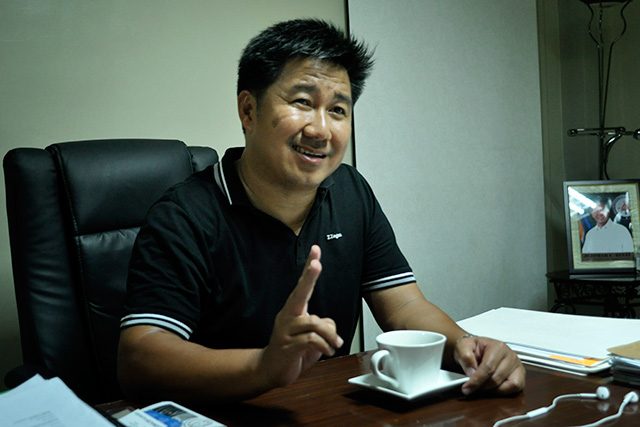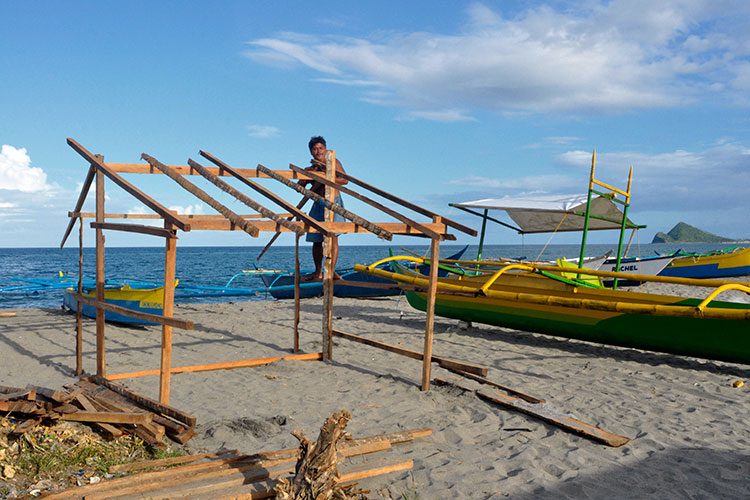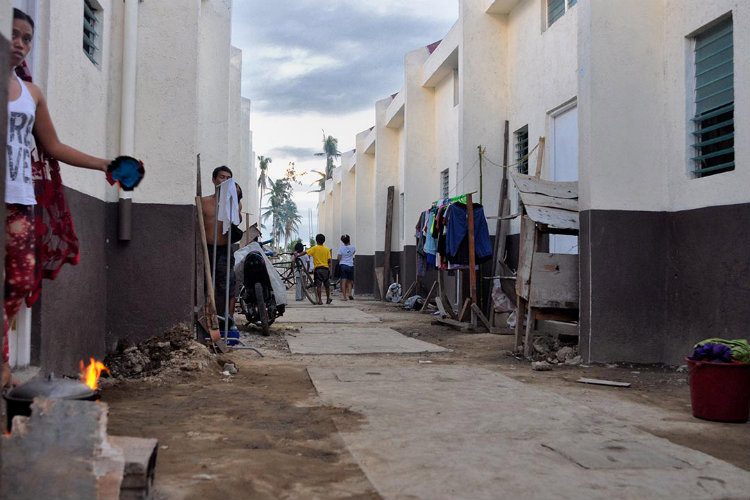SUMMARY
This is AI generated summarization, which may have errors. For context, always refer to the full article.

LEYTE, Philippines – While most local chief executives scramble to jumpstart rehabilitation efforts in their towns and cities, one mayor in the province of Leyte is relatively more relaxed.
As of May 2014, Tanauan mayor Pel Tecson said he has all the land he needs to build permanent houses for over 1,200 families affected by the proposed “no-build zone” or “no dwelling zones” in the town.
“Mabilis kaming kumikilos, our resources were focused on these permanent houses,” Tecson told Rappler in an interview. (We moved fast. Our resources were focused on permanent houses.)
Although most local governments’ rehabilitation and relocation plans are already in place, mayors face a huge brick wall – the lack of viable land for temporary shelter and permanent housing. Rehabilitation Secretary Panfilo “Ping” Lacson said that of the 216,966 housing units needed, land for only 26,000 is available.
Tanauan seems to be the exception. Mid-April, the city turned over to 20 families new permanent homes, constructed by Gawad Kalinga and the National Housing Authority.
The Tanauan government did not shell out a single centavo to construct the new houses.
“Syempre ikaw magju-jump start, prime mover ka. So that was the local government’s role,” said Tecson in an interview with Rappler. (You have to jumpstart everything, you’re the prime mover.)
Another 20 houses were scheduled to be turned over on Thursday, May 8. The pace of Tanauan’s recovery is commendable, especially because it was one of the hardest hit in the province, said Leyte Governor Dominic Petilla.
Tecson said those displaced by Yolanda need not wait too long. By November 8, 2014, the mayor said, all permanent houses should be complete.
No bunkhouses here
Tecson told Rappler the city decided to forego constructing temporary shelters – or bunkhouses – for two reasons: it would cost more, and residents preferred to go straight to permanent housing.
“Sabi nila, madi-dislocate sila twice. Might as well, they stay daw in a relative or doon lang muna where they used to live, tapos tulungan muna sila sa materials, okay na sa kanila yun,” Tecson said.

(The [Yolanda survivors] said they would be dislocated twice. It’s better if they just stay with a relative or where they originally lived, and we just help them with materials. It works for them.)
Most areas, such as the Leyte capital of Tacloban and the Eastern Samar capital Guiuan, constructed bunkhouses first before moving on to permanent housing. (READ: ‘Kickbacks on Haiyan bunkhouses at 30%’)
United Nations High Commissioner for Refugees (UNHCR) Representative in the Philippines Bernard Kerblat said it’s the usual route in areas that experience large-scale displacement.
Tanauan, he said, is a “bright exception” to the rule. “I want to stress that no matter how commendable [Tecson’s] achievement is, it is an exception rather than the rule,” he stressed.
Vulnerable communities
For those left homeless by Yolanda, being the “bright exception” to the rule doesn’t make their situation any easier.
Although Tanauan’s rehabilitation efforts are faster than the provincial capital Tacloban, nothing can be fast enough for locals who still live in tents.
Residents living in a tent city built on Tanauan’s Assumption Academy grounds said their “temporary shelter” has been anything but temporary. All 27 families have been living in tents since November 2013, a little over a week after Yolanda hit land.
Crisanta Villero, 57, hails from the coastal barangay San Roque. Unable to construct permanent housing, Villero and her relatives sleep together in a barong-barong that barely passes for a room.
“Ngayon ko lang na-realize na sa tao pala, pinaka-importante ang shelter. Pag wala kang bahay, mahirap,” said Villero. (It’s only now that I realize that shelter is very important. If you don’t have a home, life is hard.)
Villero knows all too well. On March 10, 2014, her partner of 10 years, 76-year-old Cirilo Magayoles, died from complications caused by the rigors of living inside a tent for several months.
The temporary shelter she commissioned – through money given by the Buddhist Tzu Chi Foundation – isn’t exactly her ideal dwelling. But Villero said, it’s much better than conditions inside tents.
Still, she considers the first 20 families with new houses lucky. The 20 recipients aren’t too sure themselves.

Residents told Rappler they signed contracts without reading them first. “Mabilisan eh,” said one resident. The signing, they explained, happened the same day rehabilitation czar Panfilo Lacson came. (It happened so fast.)
They’ve yet to get a copy of the contract so they’re not sure if the houses are absolutely free, or if they’ll have to pay eventually. Tecson said the houses are absolutely free and will stay with the recipient families “for life.”
The land, however, will remain with the LGU. One resident joked, “Eh paano kung bago na ang mayor?” (What if there’s a new mayor?)
Expanding Tanauan
The first-time mayor, who used to be Procter and Gamble Asia’s deputy marketing chief, has lofty plans for the second-class municipality. Even before Yolanda came, Tecson said a plan to improve the town was already in the works.
It’s one of the reasons why when time came to submit rehabilitation plans, Tecson was one of the first to comply. It was only a matter of adding items to their existing list of proposed projects, he said.
Asked what his strategy was in making sure both national government and non-governmental organizations paid attention to him, Tecson said it was a matter of presence. In the aftermath of Yolanda, the mayor made sure to attend disaster council meetings in Tacloban, even if he wasn’t needed.
Trips to Metro Manila, said Tecson, have also become frequent just to follow rehabilitation plans up with line agencies and NGOs.
“I bring this flashdrive with me wherever I go, just in case someone is interested in donating,” said Tecson, fishing out a tiny USB flashdrive from his pocket.
The results, so far, have been promising.
Aside from pledges to fix and improve existing infrastructure, Tanauan will also see new structures in the next few years.
Double Dragon Properties Corporation is set to open a mall in Tanauan. The Injap Group of companies, meanwhile, has pledged to turn the city’s plaza and mass grave into a Yolanda memorial. – Rappler.com
Add a comment
How does this make you feel?
There are no comments yet. Add your comment to start the conversation.